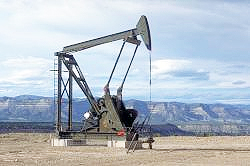What awaits Russia’s economy in 2015 after ruble collapse?

(Russia Beyond the Headlines – rbth.ru – Konstantin Korishchenko, special to RBTH – December 17, 2014)
Konstantin Korishchenko is head of the stock market and financial engineering department at the Finance and Banking Faculty of the Russian Presidential Academy of National Economy and Public Administration, and a former deputy chairman of the Russian Central Bank.
As the Russian ruble plunges to new lows against the U.S. dollar and the euro, and the Central Bank scrambles to take emergency measures to stave off economic collapse, speculation of the fate that awaits Russia’s economy next year is rife, with recession already practically a certainty. Former deputy chairman of Russia’s Central Bank Konstantin Korishchenko shares his view on Russia’s economic prospects for 2015.
The ruble has now lost almost 100 percent of its value against the main world currencies in 2014, with inflation widely expected to soar in the new year and many making dire predictions about the country’s economic prospects. But how will the Russian economy fare in 2015? In order to answer this question, it is necessary to look back at how the Russian economy has been doing in recent years.
In the 10 years prior to 2013, the ruble grew by almost 45 percent in real terms, which is a very large figure. By way of comparison, fast-growing economies like China and India strengthened their currencies by just 10 percent, though the quality of life there, calculated as GDP per capita, grew much faster than in Russia. While in Russia the growth was 85 percent, in China it reached 206 percent, and in India, 120 percent.
Russia managed to improve living standards largely due to a stronger national currency and a fast growth in real incomes. But that situation could not last forever: A strengthening currency and growing imputed costs significantly reduced the economy’s export capabilities.
Therefore, from 2012 onward, a growing negative trend took hold, which resulted in a drop in profitability for all sectors of the economy with the exception of oil and gas, a decrease in investment and a slowdown in the rise in real earnings. As a result, the Russian economy began to slow down in practically all areas.
In 2014, the situation was further exacerbated by geopolitical tensions, sanctions, loss of access to external markets and considerable capital flight. From the summer onward, more pressure came from a sharp drop in the oil prices. It became practically impossible to keep the ruble at a high level and after the Central Bank sent it into a free float, the national currency plummeted. At the moment, the dynamic of the ruble rate closely mirrors the dynamic of the price of oil.
What external factors will have a key effect on the Russian economy in 2015? First of all, the price of oil. The moment when it stops falling and stabilizes at a certain level will most likely presage a turn in the economy. Most analysts agree that oil was and is a commodity demand for which will only grow as the world economy develops. Dips in demand or peaks in supply, like the one caused by the shale boom in the U.S., are temporary, whereas the long-term trend for a rise in oil prices remains. Therefore, as the oil prices stabilize, so will the ruble rate.
Secondly, the Russian economy will be influenced by the policy pursued by foreign central banks. While the Bank of Japan continues to print money on a large scale and buy public debt, and a heated debate rages inside the European Central Bank as to whether to resume buying bonds, with Germany in strong opposition, in the U.S. the process to remove “excess” liquidity from the market is under way and is gaining strength. This is likely to result in a further weakening of the yen and the euro against the dollar. Given that most export commodities are traded in dollars, this may put pressure on commodity prices.
Thirdly, for Asian countries, primarily China, opportunities are opening up to advance on the Russian market and build long-term relations in sectors that are of mutual interest. At the same time, the main problem is presented by the limitations of those countries’ financial markets and foreign currency restrictions.These factors will impede active investment in Russia. Having said that, cooperation within the BRICS [Brazil, Russia, India, China and South Africa – RBTH] group of nations could help address this problem, albeit only in the medium-term.
Inside the Russian economy, the Central Bank’s efforts to curb inflation and to stabilize the ruble will put serious restrictions on economic growth. This has to do with the fact that with a free-floating currency, the main instruments left are money issue and interest rate. At the moment, we are seeing restrictions on liquidity and rather high interest rates. This policy indeed prevents a rise in inflation and contains speculation. But it does not contribute to more borrowing for the economy either. As a result, businesses, without having access to loans, will have to postpone their investment programs and cut costs.
Overall, the year 2015 is likely to see a reduction in economic activity in Russia, a cost-cutting drive, companies adapting to new conditions, and a reduction in consumer spending. Nevertheless, it can be considered a necessary transition period from an economy of “oil and gas excess” to an economy of balanced and sustainable growth. Unfortunately, as evident from the experience of other countries, these transformations can be rather painful, but active use of market-economy mechanisms can speed them up significantly.
Article also appeared at rbth.com/opinion/2014/12/17/what_awaits_russias_economy_in_2015_after_ruble_collapse_42297.html
[featured image is file photo, not directly related to article subject matter]
